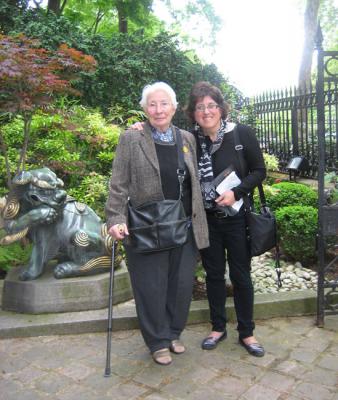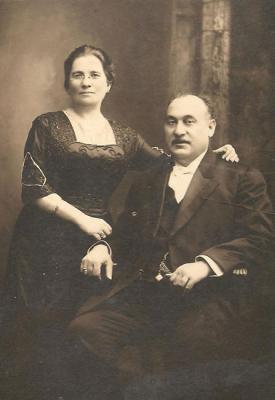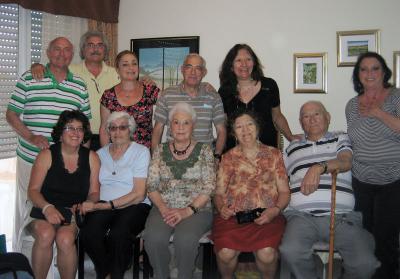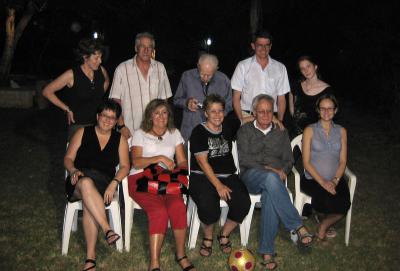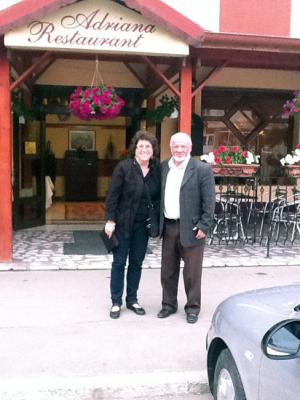Genealogists seeking information on Jews whose lives were impacted by the Holocaust often turn to Yad Vashem's Central Database of Shoah Victims’ Names. Nancy Diamond, of Washington DC, used the Names Database as her starting point on a global trek, piecing together fragmented information about her family that had become obscured in the aftermath of the Shoah. For Diamond the search became a life-altering endeavor, as she found not only interesting facts about the past, but also living relatives in various cities around the world with whom she has now developed close relationships.
"Five years ago, my paternal family name was still a mystery and my mother's family appeared to be unsearchable," explains Diamond. However, her first search of the Names Database in 2008 revealed her original paternal family name, Dashut, six family members who were Holocaust victims, and a living cousin, an elderly Israeli named Avshalom Dayagi (Dashut) who has since passed away. The reunited families visited Yad Vashem in 2008 and have maintained contact since then, helping Diamond to meet paternal cousins in Israel and Austria. Diamond has also found cousins in California, Colorado, Arizona and Argentina, growing her paternal family tree by some 200 people.
Diamond’s success in finding relatives from her father’s side motivated her to turn her attention to her maternal line. "By 2010, I was ready to work on my mother's tree from Romania and once again, Yad Vashem's Name Database was key to my research," explains Diamond. "After reading US censuses and ship records, I discovered that my maternal great-grandmother was Ernestine Schwartz (née Bricianer) from Botoşani rather than Esther Schwartz from Bucharest. Once more, I turned to the Database to find the most likely spelling of her maiden name, Britschaner, prior to WWII. This led me to two French relatives, Joseph and Lisa Bricianer, born in Botoşani and killed in Auschwitz." Diamond soon discovered Nicole Bricianer Caminade , a Parisian cousin who happens to be a Yad Vashem volunteer. In May 2012, they met in Paris and found that they share many common interests. "With help from Nicole and other recently discovered relatives in the US, France and one American relative living in Belgium, we built our Bricianer family tree and expanded our knowledge of family lore," Diamond recounts. "Seeing old pictures of my great-grandparents and cousins for the first time was an incredible experience."
One of the highlights of Diamond's research was a visit in May to her ancestors' native town of Botoşani, Romania, where, in addition to Israel, she found relatives on her mother's side. "One Friday night, I found myself among a tiny minyan of aging men praying in the Great Synagogue of Botoşani – the only remaining synagogue of more than 70 that existed prior to WWII. I leafed through prayer books that were over 120 years old, placing them in the same era as when my maternal great-grandparents, Solomon and Ernestine Schwartz and my grandmother, when she was younger, lived in this town."
Diamond's "global quest to understand my family's story and myself" continues, and she is keen to give credit to one of the main resources that has contributed to her newly enriched life. "The Names Database is a vital resource for those looking to learn more about their family trees. In my case, two original family names were lost for many years, and so I never knew my own cousins. The links within my family weakened over time, particularly for the branches like mine that lived far away from others. Now we know which relatives were lost in the Shoah, and we can share that loss – as well as our many joyous occasions – together."




